Boutique Duty Free Lotte (magasin principal) (롯데면세점 - 본점)
840.2M 2024-12-19
30, Eulji-ro, Jung-gu, Seoul-si
+82-2-759-6600~2
La boutique Duty Free du grand magasin Lotte est située en plein centre de Séoul endroit où l'on trouve de nombreuses attractions comme le palais Gyeongbokgung, le mont Namsan, Itaewon et le très populaire marché de Namdaemun. L'espace détaxé du magasin Lotte est un lieu de shopping comprenant environ 30 boutiques.
Un parking sous-terrain est mis à la disposition des clients du grand magasin Lotte et de l’hôtel Lotte.
Palais Gyeonghuigung (경희궁)
852.4M 2021-07-21
55, Saemunan-ro, Jongno-gu, Seoul-si
+82-2-724-0274
A la fin de la période Joseon, Gyeonghuigung servait de palais secondaire pour le roi. Comme il se situe dans la partie ouest de Séoul, il
porte aussi le nom de 'Seogwol'. Le palais secondaire était le palais où le roi se déplaçait en cas d’urgence. De Injo à Cheoljong, environ dix rois de la dynastie Joseon sont restés à Gyeonghuigung. Ce palais qui a été construit en utilisant la géographie inclinée aux alentours de la montagne possède une beauté traditionnelle en
matière d'architecture et une grande signification historique. A une
certaine époque, sa réputation était telle qu'il y avait même un pont arqué le reliant au palais Deoksugung. Les bâtiments Sungjeongjeon et Jajeongjeon
sont pour l’audience royale du roi, tandis que les bâtiments Yungbokjeon et Hoesangjeonet
servaient à dormir. Au total, le palais comprenait 100 bâtiments.
Mais, lorsque le Japon envahit la Corée
en 1908, l’école Japonaise Gyeongseong s'est installée dans le palais, et une grande partie du palais a été nivelée ou déplacée. Actuellement, la porte d(entrée
de Gyeonghuigung, la Porte Heunghwamun est utilisée en tant que porte d’entrée principale de l’ hôtel Silla, et Sungjeongjeon est à l’Université Dongguk. L’école a déménagé dans un autre endroit tandis
que le Sungjeongjeon et quelques autres bâtiments ont été reconstruits.
Près du palais Gyeonghuigung se trouvent le Musée d’Histoire de Séoul, la rue Jeongdong, et la rue très active Jongno. Après avoir visité le palais Gyeonghuigung, vous pouvez traverser la rue Jeongdong et marcher jusqu’au palais Deoksugung. La rue avec un mur de pierres menant
au palais Deoksugung est considérée comme l'une des rues les plus élégantes de Séoul.
Sieunjae / 시은재
852.4M 2025-08-12
439, Samil-daero, Jongno-gu, Seoul
+82-10-5355-3029
Located in Gyeongun-dong, Jongno-gu at the very heart of Seoul, Sieunjae is a hanok with a longstanding tradition. It has three guestrooms including the anbang (main room), byeolchae (detached building), and jakeunbang (small room). The anbang is the only room with a living room, where various items of old furniture, including a comfortable sofa, create an antique atmosphere. The communal bathroom and toilets are supplied with toiletries, while the communal kitchen is equipped with cooking equipment and a washing machine.
The house can be rented either as individual accommodations or in its entirety. As it is situated in Jongno-gu, at the very heart of Seoul, guests can easily reach many nearby major tourist attractions. Car users are advised to use the public parking lot as the house has no parking spaces. Entering by a small gate, the little flowerbed comes into sight. This old hanok shows traces of repair works on the tiled roof.
Boan1942 (보안1942)
867.6M 2023-09-20
33, Hyoja-ro, Jongno-gu, Seoul
Avant de devenir un centre consacré à l'art, Boan1942 était un lieu consacré aux repos des voyageurs entre 1942 et 2005. Le lieu a été rénové en espace culturel en 2017 sous le concept de "Boanstay."
Boan1942 propose différents espaces thématiques comme un café, un espace culture, des ateliers workshop, un magasin de livres, un espace pour les expositions, etc. Situé à Seochon, un haut lieu de la culture à Séoul, Boanstay offre également une superbe vue de l'aspect historique de Séoul notamment sur le palais Gyeongbokgung Palace, Cheong Wa Dae, et le village des hanok de Seochon.
<Credit: Boanstay>
Observatoire de Jeongdong (정동전망대)
879.6M 2022-08-18
15, Deoksugung-gil, Jung-gu, Seoul
+82-2-120
L'observatoire Jeongdong se situe au 13ème étage de la tour Seosomun de l'hôtel de ville. On trouve dans l'observatoire un café où chacun peut profiter d'une boisson rafraîchissante. Sur les murs ducafé, les visiteurs peuvent apprécier d'anciennes photos de Jeongdong. L'observatoire est connu pour offrir de belles vues sur le palais Deoksugun.
Grand magasin Lotte (Branche principale) (롯데백화점(본점)
886.8M 2024-05-17
81, Namdaemun-ro, Jung-gu, Seoul-si
+82-2-772-3007
Depuis son inauguration en 1979, la chaîne du grand magasin Lotte a actuellement, avec son siège social du quartier Eulgiro, huit magasins à Séoul, situés respectivement dans les quartiers Jamsil, Yeongdeungpo, Cheongnyangni, Gwanak, Gangnam et Nowon, et 24 magasins au total dans tout le pays.
Le siège social du grand magasin Lotte s’élève dans le quartier Myeongdong (Eulgiro), le centre de la mode. C’est le quartier commercial le plus grand en Corée du Sud : visité par 2 millions de personnes par jour, il est donc très intéressant pour les touristes étrangers.
Situé au centre ville et facile d’accès, le siège social est fréquenté non seulement par les Coréens, mais aussi par les étrangers. C’est un espace représentatif des grands magasins du pays.
Le Parc Tapgol (서울 탑골공원)
934.7M 2021-08-05
99, Jong-ro, Jongno-gu, Seoul-si
+82-2-731-0534
Aussi connu sous le nom de Parc de la Pagode, le Parc Tapgol, situé sur le site de l'ancien Temple Weongaksa de la Période Joseon, est le premier parc moderne à avoir été construit à Séoul. Le temple fut appelé Heungboksa sous la Dynastie Goryeo mais fut renommé durant les premières années de Joseon. Cependant, il fut détruit pendant le règne de Yeonsangun et Jungjong en raison d’une politique de repression envers le Bouddhisme. Par la suite, un parc de style occidental fut construit sur proposition de l’anglais John Mcleavy Brown, mais aucune information concernant la date et la raison n’a pu être trouvée. Le parc contient plusieurs trésors nationaux : Wongaksaji Sipcheungseoktap, Weongaksabi, et Palgakjeong où la déclaration d’indépendance fut lue, la plaque en relief du mouvement d’indépendance, ainsi que la statue de Son Byeong-hee. Le parc est d’une grande valeur historique et d’esprit national puisqu’il fut le point de départ de la Manifestation pour l’Indépendance, le 1er mars 1919.
Résidence royale Unhyeongung (운현궁)
955.4M 2021-12-22
464, Samil-daero, Jongno-gu, Seoul-si
+82-2-766-9090
Unhyeongung à Séoul désigne le lieu du palais où la parenté du roi vivait (résidence royale). Ainsi, la parenté de Heungseon Daewongun, Lee Ha-Eung (1820~1898) et sa famille ont vécu à Unhyeongung. Après que Gojong (1863~1907) soit devenu roi, Unhyeongung a été agrandi et élevé comme un palais pour la gouvernance du pays. C'est à ce moment-là que Unhyeongung est devenu comme une maison semblable à un palais avec quatre grandes portes.
Cependant, le site fut endommagé durant la guerre Imjinwaeran (guerre provoquée par l'Invasion japonaise) ce qui entraîna une réduction du site. En entrant à Unhyeongung, vous verrez sur votre droite plusieurs maisons avec des tuiles alignées qu’on appelle 'Sujiksa'. C’est à cet endroit que vivaient les ministres du palais, les gardes et les servants.
Après avoir passé les maisons Sujiksa, vous trouverez la porte Soseul. Passé cette porte, vous pourrez voir un bâtiment avec une inscription 'Noandang'. C’est là que Daewongun résidait habituellement.
Après Noandang, on trouve le plus grand bâtiment de Unhyeongung, bâtiement appelé Norakdang. Des fêtes pour les 60 ans et d’autres fêtes familiales y étaient organisés et en 1866, le mariage de Gojong et la Reine Myeongseong fut célébré en ces lieux. A gauche de Norakdang, on trouve Irodang, le bâtiment principal de Unhyeongung.
Musée d’art de Séoul (서울시립미술관)
956.9M 2023-10-17
61, Deoksugung-gil, Jung-gu, Seoul
+82-2-2124-8800
Le Musée d'Art de Séoul met à l'honneur l'art moderne coréen et international à travers ses six galeries. De grandes expositions internationales s'y tiennent tous les cinq à six mois. Depuis mai 2002 se tient en exposition permanentes autour des oeuvres de l'artiste coréenne Chon Kyung-ja. Des visites guidées en anglais de l'exposition permanente sont possibles les samedis et dimanches. Après la visite du musée, vous pourrez vous balader le long du mur en pierre du palais Deoksugung, visiter le théâtre Chongdong pour voir un spectacle traditionnel ou aller voir le spectacle Nanta au théâtre Nanta.
Bibliothèque de Jeongdok (정독도서관)
974.3M 2021-02-01
48, Bukchon-ro 5-gil, Jongno-gu, Seoul-si
+82-2-2011-5799
La bibliothèque de Jeongdok a ouvert ses portes en janvier 1977 à l’ancien emplacement du lycée Gyeonggi à Bukcheon dans l’arrondissement de Jongno-gu à Séoul. Cette bibliothèque publique municipale s’ennorgueillit de plus d’un demi-million de livres et de 16 300 ouvrages de référence. Le musée de l’éducation de Séoul à l’intérieur de la bibliothèque contient une collection de 12 000 ouvrages de référence.
La bibiothèque propose non seulement les services de base (prêt de libres, mise à disposition d’archives et de salles de lecture pour le public), mais elle offre aussi divers programmes culturels, parmi lesquels des conférences mensuelles animées par des auteurs invités, des expositions de photos, des séminaires de lecture, et des spectacles de musique et de danse. La librairie organise enfin des programmes pédagogiques sur l’économie, les sciences et la société, et propose trois projections de films par semaine dans la salle d’audiovisuel, tous les mardis, les jeudis et les dimanches.
Grâce à son énorme collection de références et ses programmes culturels, la bibliothèque a pour but d’enrichir la vie des habitants de Séoul en leur permettant l’accès aux dernières informations et à de nombreux programmes pédagogiques.
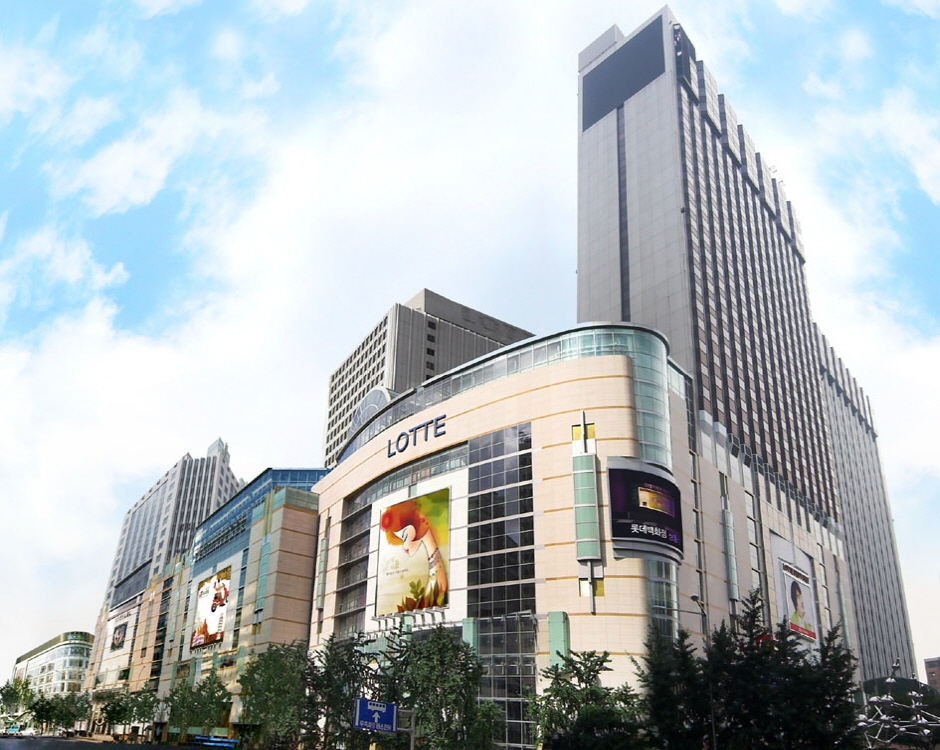
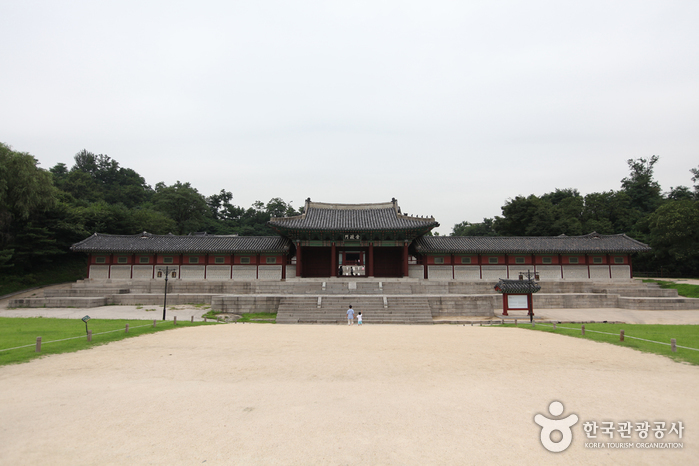
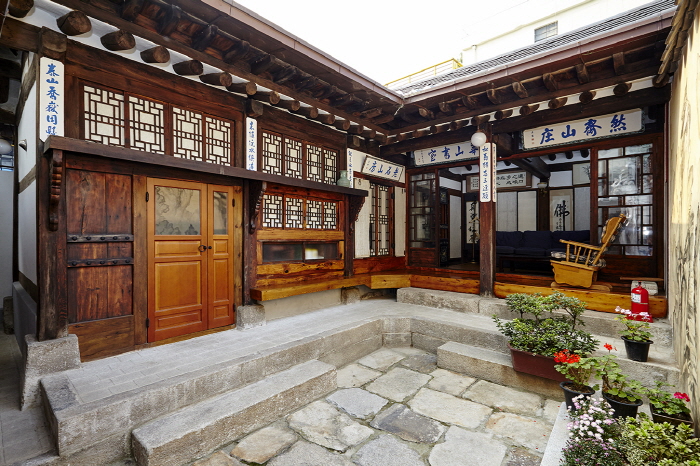

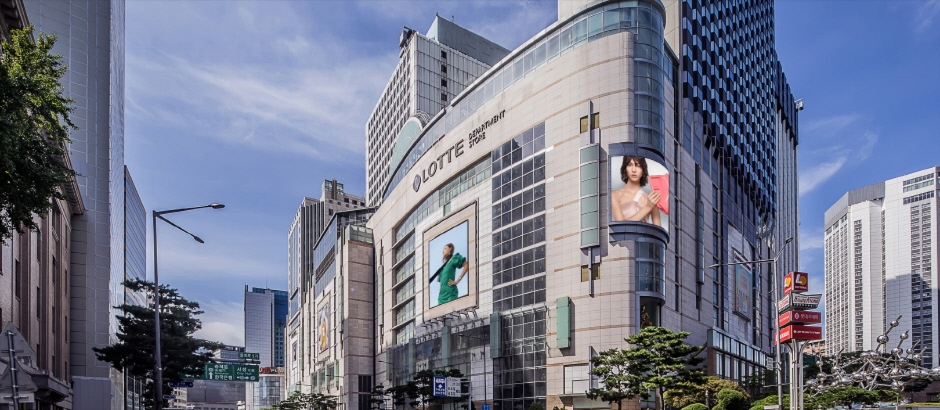
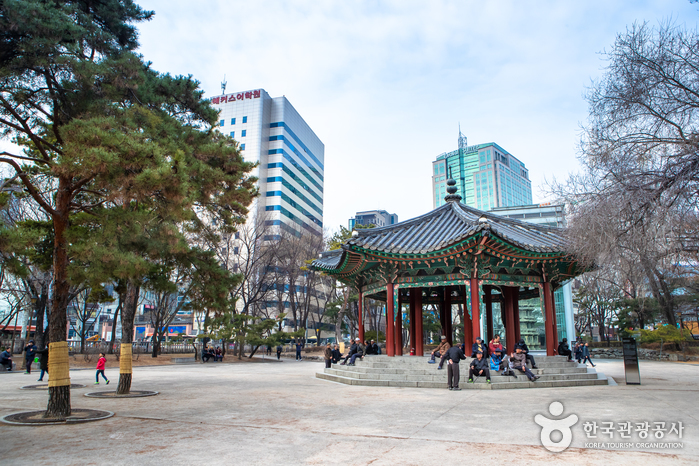

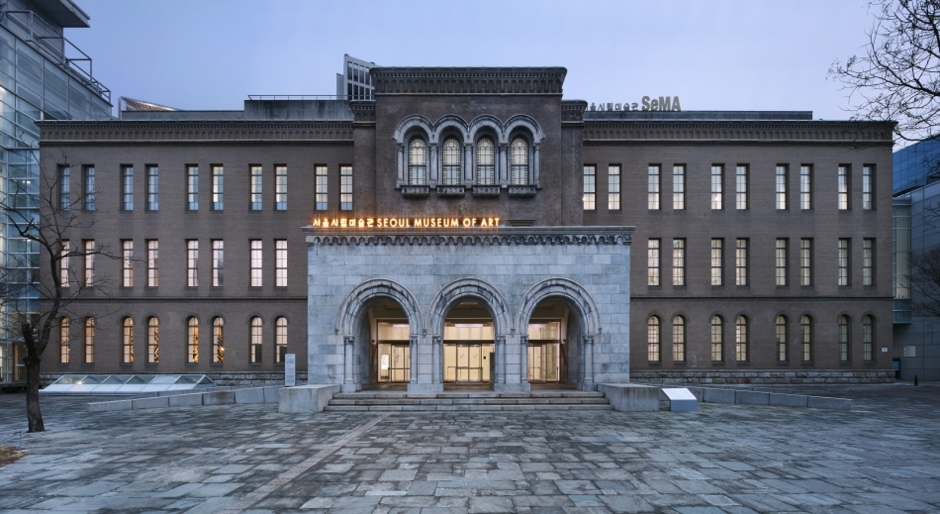
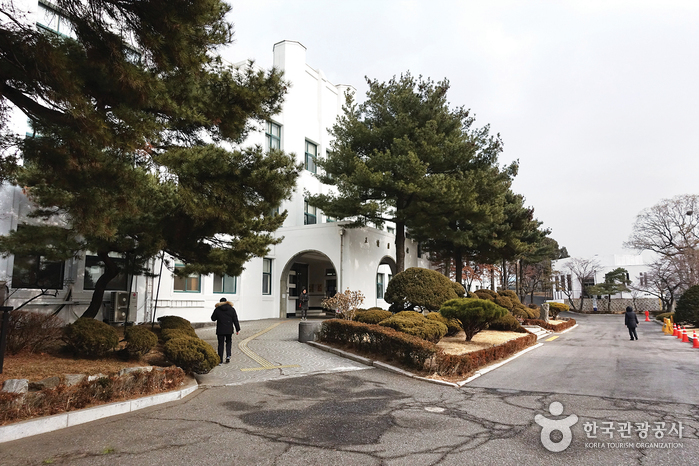
 Français
Français
 한국어
한국어 English
English 日本語
日本語 中文(简体)
中文(简体) Deutsch
Deutsch Español
Español Русский
Русский